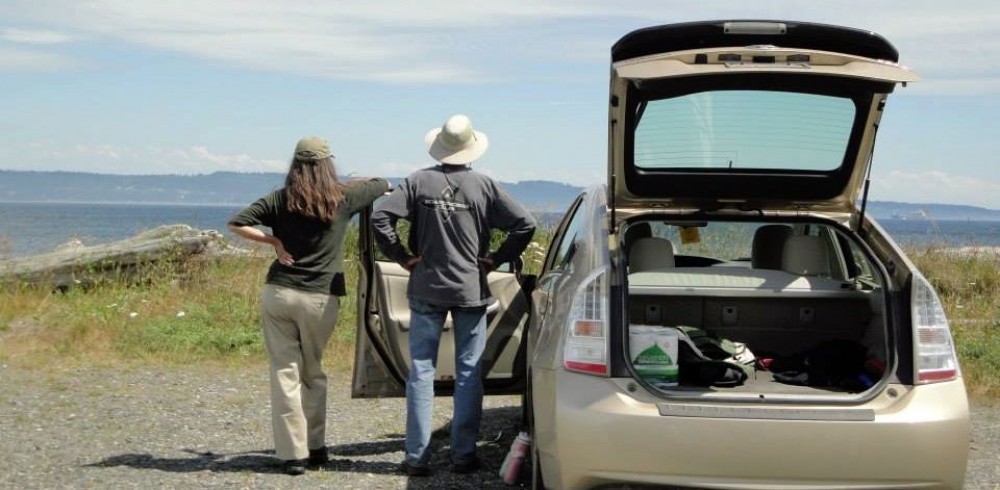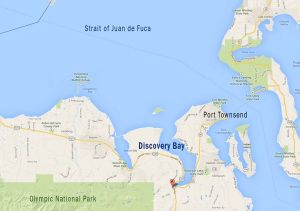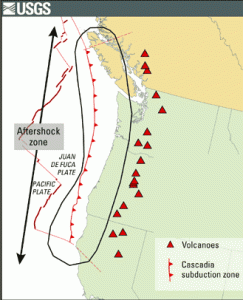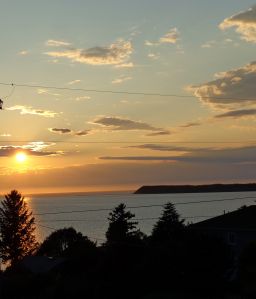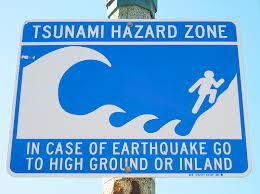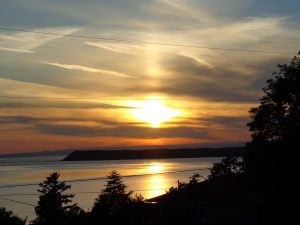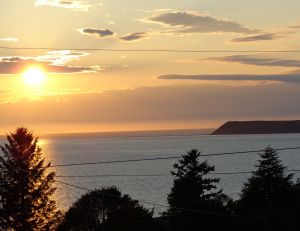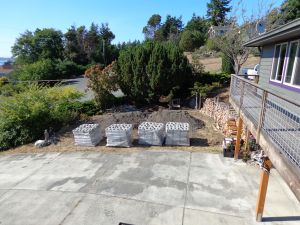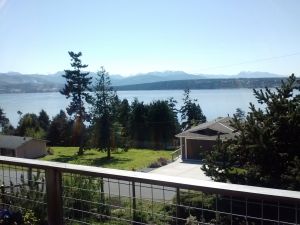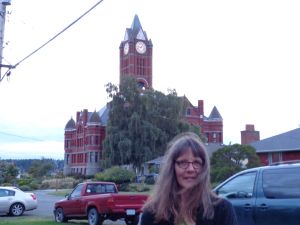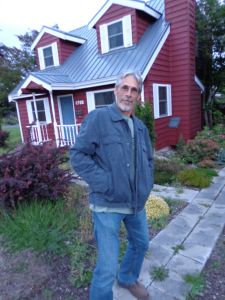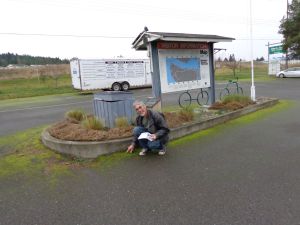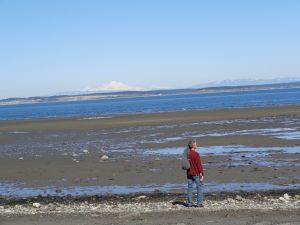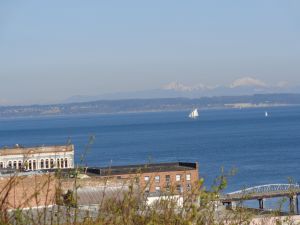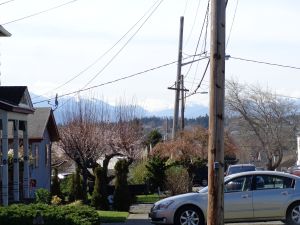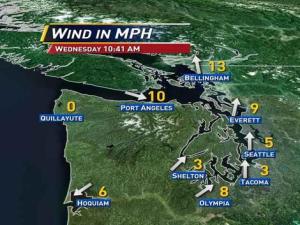It’s 8:16 on a chilly, wet morning in early spring. You’ve just arrived at work and are pouring a cup of coffee when you become aware of a low rumbling noise. Within seconds, the rumbling becomes a roar, the floor beneath you heaves, and the building begins to pitch and shake so violently that you’re thrown to the floor. The roaring is joined by a cacophony of crashing as windows shatter and every unsecured object in the room—from the desk chair to the coffee pot—is sent flying. Shaken loose by the shuddering and jolting of the building, dust and ceiling particles drift down like snow. Then the lights flicker and go out. Remembering to “drop, cover, and hold,” you crawl under the nearest table, hold on tight, and tell yourself that the shaking should last only a few seconds more . . . but it goes on and on.
This is it: the Big One. The Cascadia subduction zone has just unleashed a magnitude 9.0 earthquake.
This fun-filled scenario begins the latest report from the Cascadia Region Earthquake Workgroup. Pretty nifty, huh? I mean, who knew the “Big One” was actually brewing along the British Columbia, Washington and Oregon coast, rather than the more commonly recognized earthquake-prone Bay Area of California? Nobody until the 1970s, as it turns out. That’s when some smarty pants discovered there’d been a whopper of a quake here in 1700.
[Which calls for a correction to my prior statement: There were indeed already people who knew about the 1700 earthquake — the Native Americans unfortunate enough to reside along the northwest coastline at that time. They knew it intimately.]
The fun doesn’t stop there, either. Apparently, we’re overdue for another one. And while the most recent findings show the fault zone is farther out in the ocean than they’d initially thought, meaning the shaking won’t be quite so severe (Yay!), the resultant tsunami will likely be more intense and damaging (Aw crap).
As some of you already know, John and I live close to the water. We’re not on the western coast of Washington but our bay — Discovery Bay — is attached to the Strait of Juan de Fuca, the waters of which flow in from the Pacific.
In the office here at Cape George there’s a map showing which houses might wind up under water in the event of a tsunami. Ours is not one of them. In fact, our house sits 50 feet higher still than the highest tsunami targets, which should be enough to assuage my wall-of-water fears.
Yep, it sure should be.
It isn’t.
See, I’m not good at threats of natural disasters. Man-made ones aren’t a favorite of mine either but wow, those natural ones are real doozies. Hurricanes, floods, avalanches, tornadoes. Especially tornadoes. Growing up in Central Indiana, tornadoes were a part of life. In fact, my favorite aunt and uncle’s house was flattened by one when I was a child. I’ll never forget my cousin’s nightmarish recollections of being buried under the rubble, screaming, each breath sucking in mouthfuls of crushed mortar.
I’d thought we were getting away from that when we relocated to the Texas Hill Country but no, oh no, there are plenty of twisters there too. Every spring I watched terrified as the local weatherman displayed ominous radar images filled with blobs of red, purple and even black, punctuated by multiple swirling, twirling discs indicating tornadic activity moving our way. How nice, then, to move to western Washington where tornadoes are all but unheard of. No more natural disaster worries!
Until I read in further detail about this.
Then just last week came The Great Washington ShakeOut earthquake preparedness drill. From what I gather, when the Big One hits you’re supposed to dive under a table and hold tight to its legs until the shaking stops. Then, if you’re near the water, you’re to run like hell uphill as fast as your legs can scamper.
Simple as that. Oh, except you should also keep plenty of emergency supplies on hand — non-perishable food, a first aid kit, toiletries, a battery operated radio. Things like that. We’ve started to load up a closet in our basement, one that’s supported by two concrete walls and hopefully fairly shake-proof.
It isn’t finished yet. For instance, we have no portable propane cookstove or pots and pans. We do have a wok, a wooden salad bowl and charcoal, however, plenty enough for a festive backyard post-apocalyptic stir-fry. We even have a vase full of fake Gerbera daisies for decoration and a Cuisinart ice cream maker we can stare at wistfully until the electricity [maybe] comes back on.
I learned from a neighbor that shortly after the 2011 tsunami disaster in Japan, an earthquake expert of some sort came to Cape George to sum up what might happen here if the Big One were to occur.
He said Diamond Point (the piece of land sticking out in the water on the left) and Protection Island (the island in the distance on the right), as well as the Dungeness Spit farther west would help temper any tsunami waves barreling towards us through the Strait of Juan de Fuca. (I’m guessing the electric pole smack in the center of this photo won’t be much help in that regard.) Good news, right? Sure, until we get to his next prediction: Should an earthquake vibrate an enormous hunk of Protection Island into the bay,
the rush of displaced water will rise up and swallow Cape George whole.
After sharing this little factoid with me, my neighbor shrugged and pointed out once more that at least here in western Washington we don’t get major floods, tornadoes and the like. The Big One is really the only natural disaster we have to be concerned with.
Phew. What a relief.
